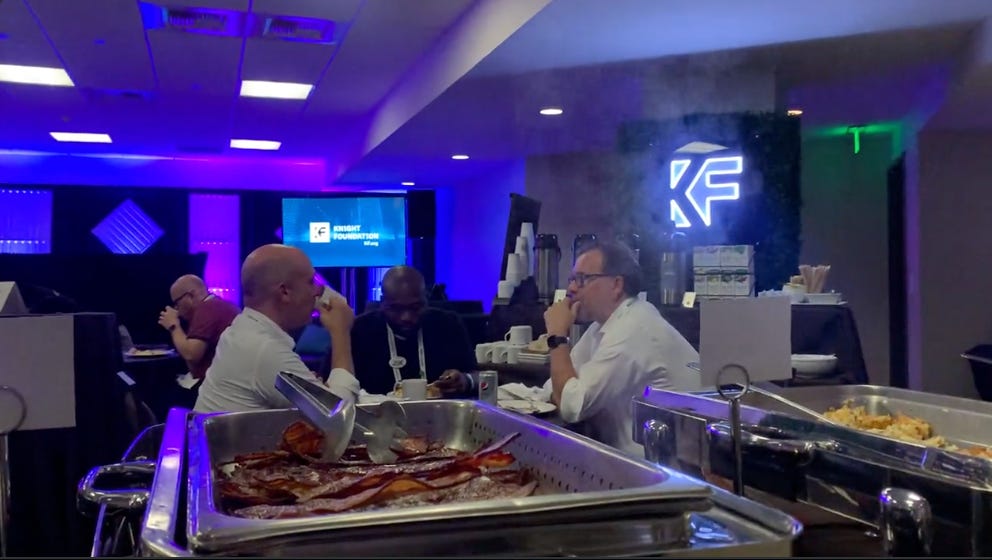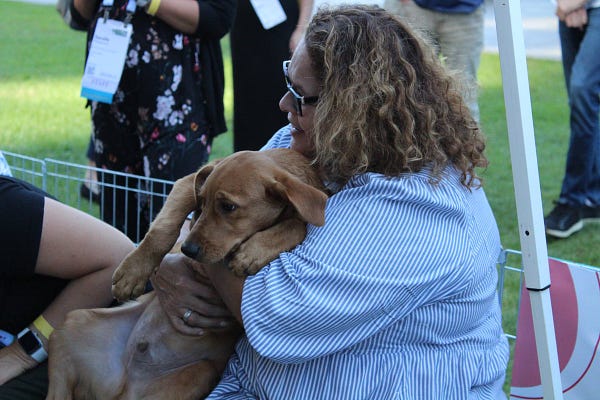Why the new local news networks matter
Three new grants display the power of scale in a diffuse media world

One of the key goals of Knight’s journalism strategy is finding solutions that can benefit many news organizations and, as they scale, increase the number of newsrooms that benefit at a lower cost. So one of the questions we ask ourselves when evaluating any proposal is, “How will this grant help news organizations that won’t directly receive any funds?”
That’s why we’re excited about the grants we announced last week to the Institute for Nonprofit News (INN), Local Independent Online News (LION) Publishers and the Center for Community Media (CCM). Those organizations combine to provide services to close to 1,000 publishers navigating journalism’s perilous road to sustainability.
I won’t repeat most of what’s in the release, but I did want to provide some additional context.
Many of you are probably familiar with INN and LION Publishers, so I’ll start by talking about the Center for Community Media. Located at the Craig Newmark Graduate School of Journalism at the City University of New York, CCM is focused on driving sustainability among community and ethnic media via its Black Media, Latino Media and (newer) Asian Media initiatives, which produce training, research and convenings for publishers of color.
In 2020––thanks to a grant from Knight––CCM launched its Advertising Boost Initiative (ABI) in New York City, which led to one of the great local news revenue success stories of recent years. ABI connects community media outlets to city advertising agencies, and thanks to CCM’s work, New York City agencies placed $9.9 million worth of advertising in print and digital community media outlets in fiscal year 2020. That figure amounted to 84 percent of the city’s total print and digital advertising budget. For comparison, in 2013, these same news organizations received a mere 18 percent of that ad budget. Part of Knight’s new funding will go toward expanding the ABI model into other markets.
Our grant to INN––which has 383 nonprofit members––will allow it to expand its major-donor fundraising training program, build out new geographic and subject-based journalism collaboratives and recruit and retain more people of color in business leadership. If this grant performs as planned, the total annual revenue across the INN network would double by 2025 and the share of earned revenue among its members would almost double.
While INN only serves nonprofits, roughly two-thirds of LION Publishers’ 443 members are for-profit. Our grant to LION will go toward the production of 100 sustainability audits for LION members and the consulting and financial support to help publishers address the red flags raised by these audits. We felt it was important to not only help identify the problems, but also fund the solutions.
In terms of the strategy laid out in this newsletter back in July, these grants each come with a focus on sustainability, scalability and developing talent with a specific focus on diversity. You’ll continue to see all these themes in our grant-making, with scale being a crucial way we try to achieve ROI far beyond our initial investment in a single grantee.
Welcome Ariana Aboulafia!
Ariana Aboulafia joined Knight’s journalism team as a program officer last week. Ariana didn’t get much of a chance to settle into the job, as her first day was at the madhouse we call the Online News Association conference. It was not exactly your low-key job orientation. But, hey, we don’t mess around at Knight. 😉
Ariana comes to Knight from the Miami-Dade Public Defender’s Office, where she was an assistant public defender on felony cases. She received her JD from the University of Miami School of Law (magna cum laude) in 2020 and her BA in political science and law, history, and culture from University of Southern California (USC) in 2016. Her background is a terrific fit for the legal portfolio she will help manage, but she also brings a passion for and experience in journalism and content. Ariana served as a biweekly opinion columnist for USC’s digital newspaper, a senior editor for the Race and Social Justice Law Review and helped create curricular resources for the 1619 Project Law School Initiative.
You can see most of the journalism team here in this 360-degree video shot at ONA. While Karen Rundlet wasn’t able to make it to LA, you can see the rest of us hamming it up. (Not surprisingly, I’m the one who isn’t quite sure what to do.)
Other news around the horn…
Impact
🗳️Democracy Day wins big. September 15 was International Democracy Day, but it was also the first iteration of a U.S. Democracy Day, with news outlets promising to cover threats to democracy and what people can do to counter them. The effort was a smashing success, with nearly 400 news outlets (TV, print, radio, online) reporting on national and local threats to democracy, with a database of 186 stories and counting (many of which are free to republish). Participating newsrooms included Spotlight San Jose, WHYY, Arizona Luminaria and Oklahoma City Free Press. Big props to lead organizers Jennifer Brandel of Hearken, Stefanie Murray of the Center for Cooperative Media, Rachel Glickhouse of News Revenue Hub, and Bridget Thoreson of INN.
🗞️Tiny paper makes move to nonprofit. Sometimes it takes a crisis to find out who really cares. That’s the case at the Crestone Eagle in Colorado, which asked readers to pitch in donations to help it survive. They did, helping the paper raise $15,000 in two weeks. That opened the eyes of Eagle founder Kizzen Laki, who decided to convert the paper to a nonprofit so it could raise more donations and grants. “I thought, if they’re willing to do this when it’s not a tax deductible donation, then going as a nonprofit, it’s already been proven that this is going to work,” Laki told Colorado Public Radio. Plus, they have support from more resources in the state for local news such as the Colorado Media Project and COLab.
Guides
💰Helping collaboration pay off. “Collaboration” has been a growing buzzword in local news, with the expanding number of collaboratives supported by the Solutions Journalism Network (SJN), Local Media Association (LMA) and others. While we know these collaboratives can produce stronger, more widely distributed stories, what about the business side? Helpfully, the Center for Cooperative Media, Lenfest Institute and SJN teamed up to give us a Collaborative Sustainability Guide, curating key case studies and resources. These include a look at how Word in Black sold sponsored content in its newsletter and how the Charlotte Journalism Collaborative started making money with event sponsorships.
🧭 Chalkbeat workshops point the way for news entrepreneurs. It’s not easy being a news entrepreneur, trying to make a startup blossom in a jungle of thorny tech obstacles, poisonous misinformation and camouflaged major donors. Chalkbeat, a successful education publisher, is here to help with its Local News Field Guide as well as a workshop series this fall, both supported by Google News Initiative. Topics for the free workshops include tracking impact, authentic listening to create a more diverse audience and unlocking philanthropic dollars.
Tools
📖Journalists can now get free access to Encyclopedia Britannica: If you’re a journalist and looking to bone up on the history of Ukraine, inflation, LeBron James or whatever else you’re writing about, Encyclopedia Britannica is now offering free access to its full database. If you’re interested, contact Theodore Pappas (tpappas@eb.com) to request your free subscription.
Upcoming Events 📅
Conference for Truth & Trust Online
Boston
Oct. 13–14
Independent News Sustainability Summit
Austin
Oct. 27–29
Washington, DC
Oct. 27–30
Tweet of the Week
News @ Knight Credits
Written by Jim Brady, with Mark Glaser
Edited by Jessica Clark and Kara Pickman







